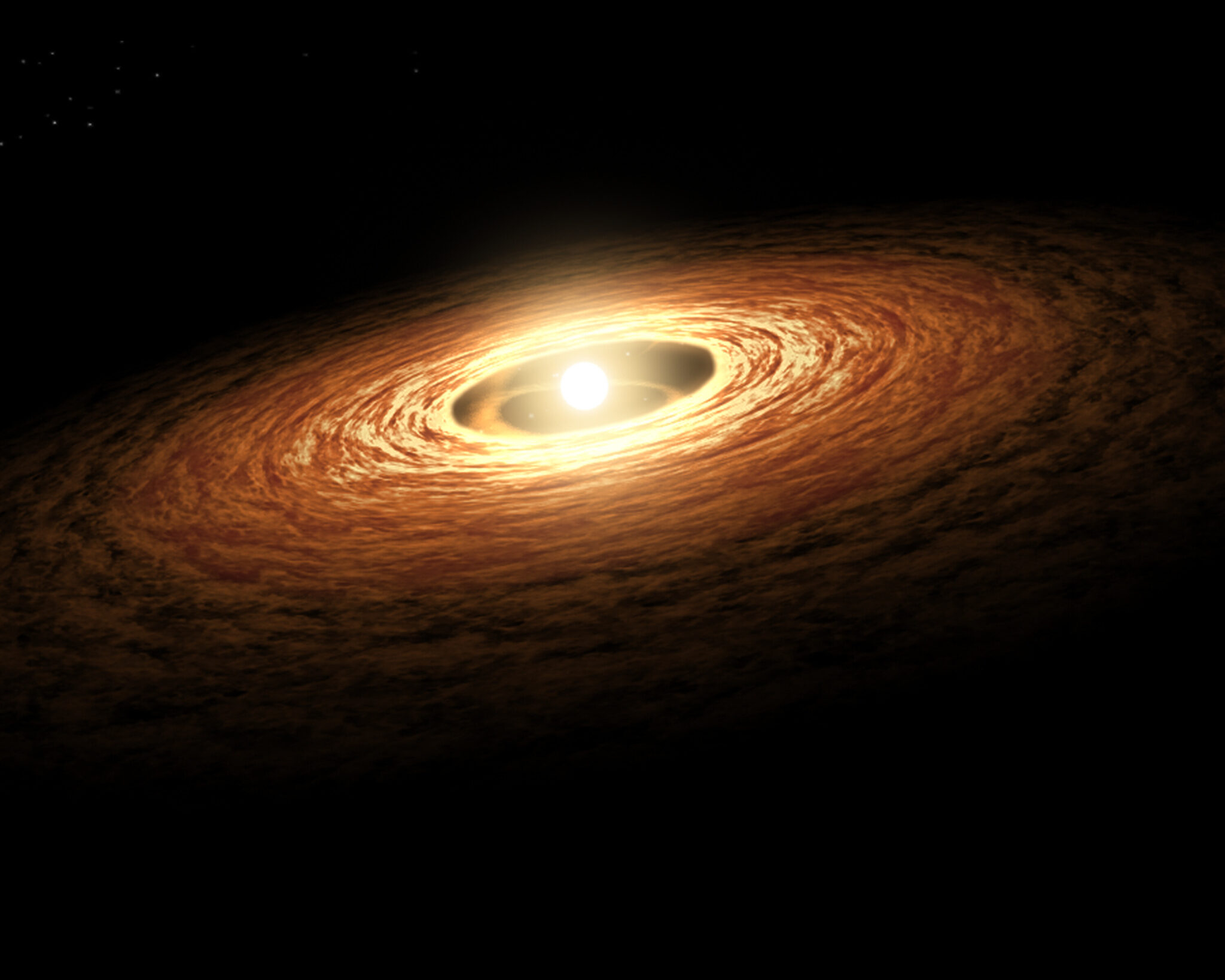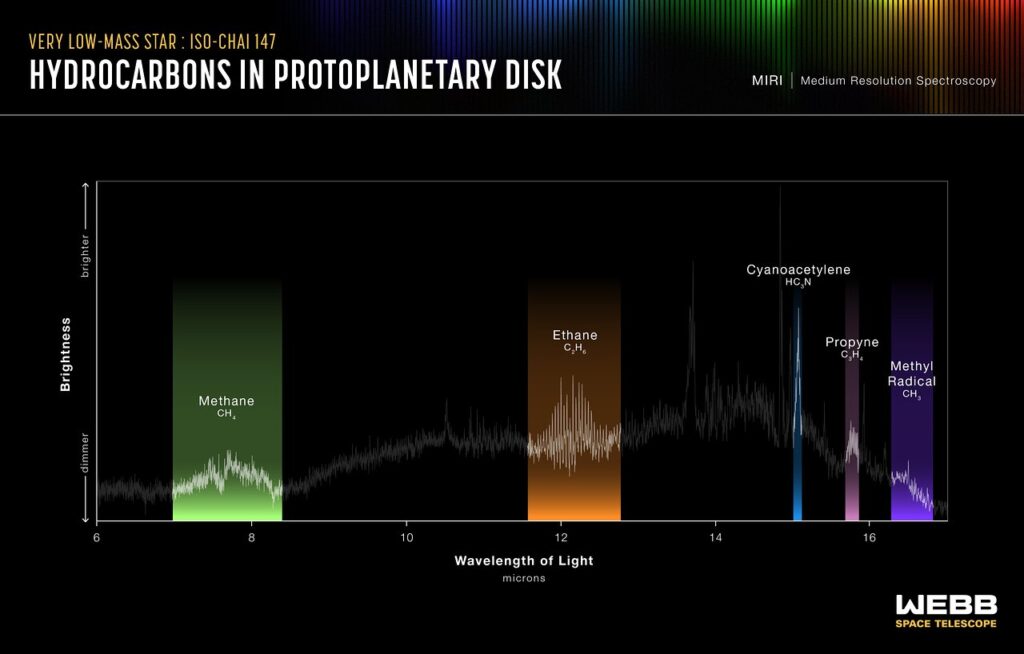An international team of astronomers used the James Webb Space Telescope (JWST) to study a protoplanetary disk around a low-mass star. It was able to detect a large number of carbon compounds, including ethane.

Planets are formed from the gas and dust disks surrounding newborn stars. At the same time, in cases with low-mass luminaries, the probability of formation of rocky planets is much higher than that of gas giants. This is indicated by the results of observations of red dwarfs, which, as a rule, meet bodies of this type.
It used to be assumed that the chemical composition of rocky planets in red dwarf systems was similar to Earth’s. However, the data obtained by JWST suggest that their protoplanetary disks may evolve differently than disks around more massive stars.
Astronomers came to this conclusion while studying the newborn luminary ISO-ChaI 147, which has a mass of only 0.11 of the solar mass. For them, the JWST was involved. Through a series of observations, it found that the gas in the planet-forming region of the star was rich in carbon. This could potentially be due to carbon being removed from the solid material from which rocky planets can form, which could explain why the Earth is relatively carbon-poor.

In total, JWST was able to identify 13 carbon-containing molecules, including benzene, ethylene, propyne and ethane (the last one has never been found outside the Solar System before). According to the researchers, these results have important implications for astrochemistry. The composition of the protoplanetary disk around ISO-ChaI 147 is dramatically different from the composition of disks around solar-type stars, which are dominated by oxygen-containing molecules such as carbon dioxide and water.
Scientists intend to continue observations and study a larger sample of protoplanetary disks around low-mass stars. This will allow us to understand how carbon-rich disks are common in the Milky Way and better understand the processes going on inside them.
According to ESA


